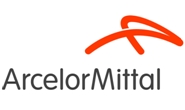Market Segment

October 23, 2018
Dofasco to Receive Fed Dollars for Modernization
Written by Sandy Williams
ArcelorMittal Dofasco will receive up to $38 million from the Canadian government towards a $156 million modernization project at its Hamilton facility.
The money is part of a C$250 million (U.S. $191 million) fund set up to provide support to steel, aluminum and manufacturing companies impacted by tariffs resulting from the Section 232 measures imposed by the United States. The funding will be a mix of grants and loans provided over the next three years.
“It’s a priority for us to eliminate the tariffs on aluminum and steel, so we’re very engaged with our American counterparts,” said Navdeep Bains, Minister of Innovation, Science and Economic in a Bloomberg interview on Friday. “Today’s announcement really demonstrates a commitment to the steel industry and steel workers.”
Bains said the funding will help protect steel jobs in the region while the government works toward a removal of the U.S. tariffs. “If a company is more competitive and is able to provide a better price point…that bodes well for the employees,” said Bains.
When asked if he would support U.S. quotas on steel and aluminum imports, Bains said he did not rule out the possibility of quotas, but is focused on eliminating the tariffs.
ArcelorMittal Dofasco is part of a C$205 million project by ArcelorMittal to upgrade its mills in Ontario and Quebec. Last week’s announcement will complement the C$23 million Dofasco received in April from the province for an upgrade to the hot mill operation.
“This investment support really helps us to enhance, speed up and maintain the projects we have in our hopper to really drive our efficiencies and our improvements,” said ArcelorMittal Dofasco CEO Sean Donnelly.
“It has been a challenging time economically more recently. This investment really helps us drive our agenda forward.”
Planned upgrades for Dofasco include replacing three aging coilers in the hot mill with two new ones and the accompanying runout tables, as well as an upgrade of the strip cooling system. The project is expected to be completed in second-quarter 2020.
Dofasco is also engaged in a digitization and automation initiative to improve manufacturing and business processes.
“Digitization at Dofasco is an evolution of our current automation activities, not a revolution,” said Brian Benko, Vice-President, Procurement and Information Technology in September.
“We have already successfully implemented solutions using new digital technologies, such as mobile, cloud solutions, Internet of Things (IoT) sensors, drones and advanced algorithms in some of our manufacturing and business process improvement projects,” said Benko.
Manufacturing projects include the automation of the Ladle Metallurgical Facility (LMF) to improve production by minimizing manual intervention, reducing process variation and improving the final metallurgical properties.
ArcelorMittal is Hamilton’s largest private sector employer with approximately 5,000 employees. The mill ships about 4.5 million net tons of flat carbon steel annually.







